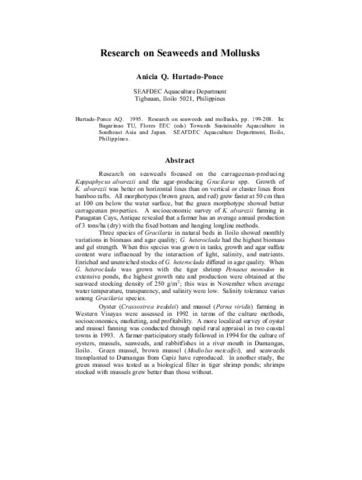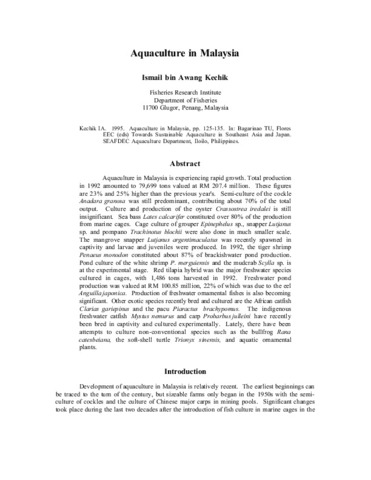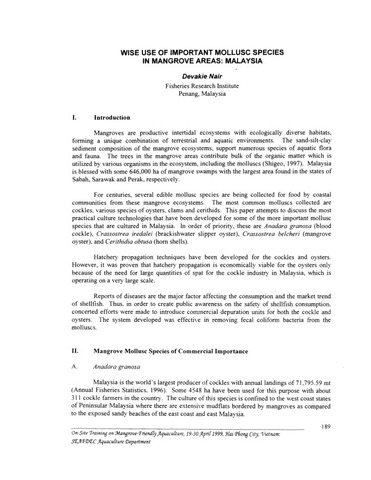| dc.contributor.author | Samonte-Tan, Giselle P. B. | |
| dc.contributor.author | Davis, George | |
| dc.date.accessioned | 2022-03-31T07:15:13Z | |
| dc.date.available | 2022-03-31T07:15:13Z | |
| dc.date.issued | 1998 | |
| dc.identifier.citation | Samonte-Tan, G. P. B., & Davis, G. C. (1998). Economic analysis of stake and rack-hanging methods of farming oysters (Crassostrea iredalei) in the Philippines. Aquaculture, 160(3–4), 239-249. | en |
| dc.identifier.issn | 0044-8486 | |
| dc.identifier.uri | http://hdl.handle.net/10862/6317 | |
| dc.description.abstract | The cost efficiency of stake and rack-hanging methods of farming oysters are compared. Annual costs and returns data for both methods were obtained from a socioeconomic survey conducted in 1991 at the Aquaculture Department of the Southeast Asian Fisheries Development Center (SEAFDEC/AQD). On average, 14 kg m−2 (shell-on) and 22 kg m−2 (shell-on) were produced using the stake and rack-hanging methods, respectively. The translog cost function for 58 oyster farms was estimated using iterative seemingly unrelated regression (SUR). Statistical analysis indicates that the higher production from the rack-hanging method is significantly different (α=0.10) from the production using the stake method. The cost-efficient method varied based on production levels. At output levels less that 9044 kg (shell-on), the rack-hanging method had lower average cost per unit, and for higher production levels the stake method had the lower average costs. Similar conclusions were drawn from the marginal cost analysis. Results imply when production is less than 9044 kg, then the most efficient technology is the rack-hanging method and if production is greater than 9044 kg, the most efficient method is the stake method. | en |
| dc.language.iso | en | en |
| dc.publisher | Elsevier | en |
| dc.subject | Crassostrea iredalei | en |
| dc.subject | Philippines | en |
| dc.title | Economic analysis of stake and rack-hanging methods of farming oysters (Crassostrea iredalei) in the Philippines | en |
| dc.type | Article | en |
| dc.citation.volume | 160 | |
| dc.citation.issue | 3-4 | |
| dc.citation.spage | 239 | |
| dc.citation.epage | 249 | |
| dc.citation.journalTitle | Aquaculture | en |
| dc.subject.asfa | aquaculture economics | en |
| dc.subject.asfa | oysters | en |
| dc.subject.asfa | biological production | en |
| dc.subject.asfa | economics | en |
| dc.subject.asfa | oyster culture | en |
| dc.subject.asfa | farming systems | en |
| dc.subject.asfa | off-bottom culture | en |
| dc.subject.asfa | costs | en |
| dc.subject.asfa | aquaculture | en |
| dc.identifier.doi | 10.1016/S0044-8486(97)00231-7 | |
| dc.subject.scientificName | Crassostrea iredalei | en |
| dc.subject.scientificName | Magallana bilineata | en |



